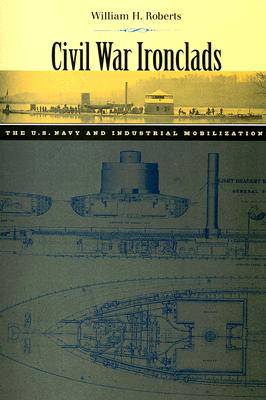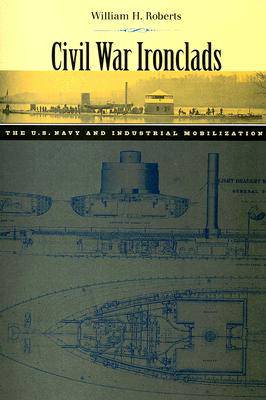
- Retrait gratuit dans votre magasin Club
- 7.000.000 titres dans notre catalogue
- Payer en toute sécurité
- Toujours un magasin près de chez vous
- Retrait gratuit dans votre magasin Club
- 7.000.000 titres dans notre catalogue
- Payer en toute sécurité
- Toujours un magasin près de chez vous
Description
Honorable Mention, Science and Technology category, John Lyman Book Awards, North American Society for Oceanic History
Civil War Ironclads supplies the first comprehensive study of one of the most ambitious programs in the history of naval shipbuilding. In constructing its new fleet of ironclads, William H. Roberts explains, the U.S. Navy faced the enormous engineering challenges of a largely experimental technology. In addition, it had to manage a ship acquisition program of unprecedented size and complexity. To meet these challenges, the Navy established a "project office" that was virtually independent of the existing administrative system. The office spearheaded efforts to broaden the naval industrial base and develop a marine fleet of ironclads by granting shipbuilding contracts to inland firms. Under the intense pressure of a wartime economy, it learned to support its high-technology vessels while incorporating the lessons of combat.
But neither the broadened industrial base nor the advanced management system survived the return of peace. Cost overruns, delays, and technical blunders discredited the embryonic project office, while capital starvation and never-ending design changes crippled or ruined almost every major builder of ironclads. When Navy contracts evaporated, so did the shipyards. Contrary to widespread belief, Roberts concludes, the ironclad program set Navy shipbuilding back a generation.
Spécifications
Parties prenantes
- Auteur(s) :
- Editeur:
Contenu
- Nombre de pages :
- 300
- Langue:
- Anglais
- Collection :
Caractéristiques
- EAN:
- 9780801887512
- Date de parution :
- 01-11-07
- Format:
- Livre broché
- Format numérique:
- Trade paperback (VS)
- Dimensions :
- 162 mm x 229 mm
- Poids :
- 417 g







